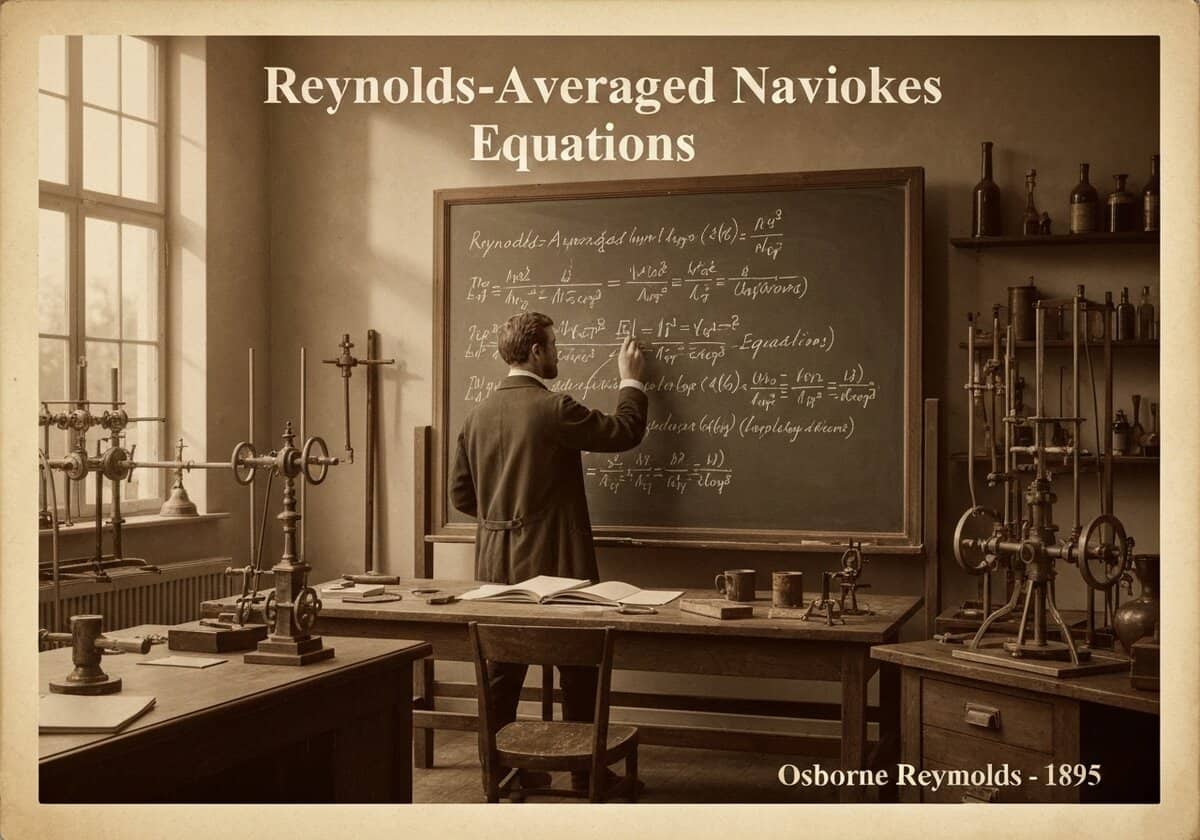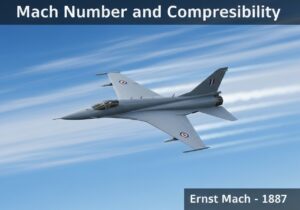The Reynolds-Averaged Navier-Stokes (RANS) equations are time-averaged equations of motion for turbulent fluid flow. This approach, called Reynolds decomposition, separates flow variables into a mean and a fluctuating component. The averaging process introduces an additional term, the Reynolds estrés tensor, which represents the effect of turbulence and must be modeled to achieve closure, making simulations computationally tractable.
Ecuaciones de Navier-Stokes promediadas por Reynolds (RANS)
- Osborne Reynolds

The core idea behind RANS is Reynolds decomposition, where an instantaneous quantity is split into its time-averaged and fluctuating parts. For velocity, this is [latex]u_i(x,t) = \bar{u}_i(x) + u’_i(x,t)[/latex]. When this is substituted into the Navier-Stokes equations and the equations are time-averaged, the non-linear convective term generates a new term, [latex] -\rho \overline{u’_i u’_j} [/latex], known as the Reynolds stress tensor. This tensor represents the net transfer of momentum due to turbulent fluctuations.
The appearance of this unknown tensor leads to the ‘closure problem’ of turbulence: there are more unknowns than equations. To solve the system, the Reynolds stresses must be related to the mean flow quantities through a turbulence model. The most common approach is the Boussinesq hypothesis, which assumes the Reynolds stresses are proportional to the mean strain rate, introducing an ‘eddy viscosity’ or ‘turbulent viscosity’. This is analogous to how molecular viscosidad relates stress to strain rate in laminar flow. Turbulence models, such as the popular k-ε (k-epsilon) and k-ω (k-omega) models, are sets of additional transport equations used to compute this eddy viscosity throughout the flow field. For example, the k-ε model solves for the turbulent kinetic energy (k) and its rate of dissipation (ε). RANS provides a good balance of accuracy and computational cost for many engineering applications, as it avoids the prohibitive expense of resolving all turbulent eddies directly.
Tipo
Disrupción
Utilización
Precursores
- Ecuaciones de Navier-Stokes
- Osborne Reynolds’ experiments on flow transition from laminar to turbulent
- Conceptos de mecánica estadística y promediación temporal
- Joseph Boussinesq’s eddy viscosity hypothesis
Aplicaciones
- Diseño de alas y fuselajes de aviones comerciales
- Análisis de turbomáquinas como reactores y turbinas
- diseño hidrodinámico de cascos de barcos
- Modelado de flujo en motores de combustión interna
- Aplicaciones de ingeniería civil como la carga de viento en edificios.
- Ciencia del deporte para analizar la aerodinámica de los atletas y el equipo.
Patentes:
Posibles ideas innovadoras
Membresía obligatoria de Professionals (100% free)
Debes ser miembro de Professionals (100% free) para acceder a este contenido.
DISPONIBLE PARA NUEVOS RETOS
Ingeniero Mecánico, Gerente de Proyectos, Ingeniería de Procesos o I+D
Disponible para un nuevo desafío a corto plazo.
Contáctame en LinkedIn
Integración de electrónica de metal y plástico, diseño a coste, GMP, ergonomía, dispositivos y consumibles de volumen medio a alto, fabricación eficiente, industrias reguladas, CE y FDA, CAD, Solidworks, cinturón negro Lean Sigma, ISO 13485 médico
Estamos buscando un nuevo patrocinador
¿Su empresa o institución se dedica a la técnica, la ciencia o la investigación?
> Envíanos un mensaje <
Recibe todos los artículos nuevos
Gratuito, sin spam, correo electrónico no distribuido ni revendido.
o puedes obtener tu membresía completa -gratis- para acceder a todo el contenido restringido >aquí<
Contexto histórico
Ecuaciones de Navier-Stokes promediadas por Reynolds (RANS)
(si se desconoce la fecha o no es relevante, por ejemplo "mecánica de fluidos", se ofrece una estimación redondeada de su notable aparición)
Invención, innovación y principios técnicos relacionados


























